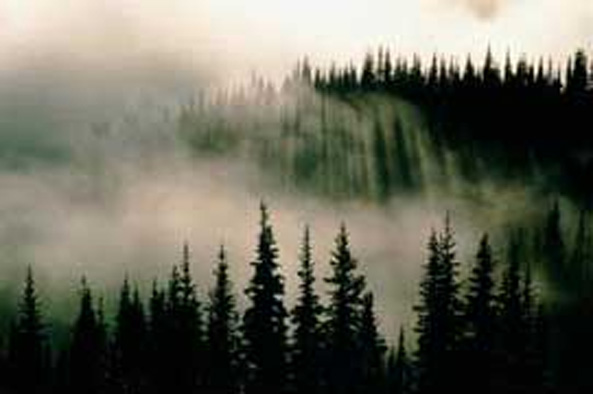
G-O Road
| Status | Threatened |
| Country | United States |
| Report By | Amy Corbin |
| Posted | May 1, 2002 |
| Updated | May 1, 2002 |

The Supreme Court case known as G-O Road set an extremely damaging precedent regarding legal protection of Native American sacred sites on federal land. In 1988, the court ruled that construction of a logging road through U.S. Forest Service land in California could not be stopped by Native Americans seeking the freedom to practice ancient religious traditions. Chris Peters, of the Seventh Generation Fund, who was a plaintiff in the case, calls the High Country area “Indian heaven … an area that is so sacred that there is no mitigation of any disturbance—you can’t mitigate a disruption to heaven.”
History of the Conflict
In the 1970s, the Forest Service began to make plans for a road that would connect the Gasquet and Orleans Ranger Districts (hence “G-O Road”) and allow for logging in a section of the Six Rivers National Forest. The Pohlik-lah, Karuk and Tolowa consider the area to be sacred, with places like Doctor Rock and Chimney Rock used for vision quests and prayer. An anthropologist hired by the Forest Service to evaluate the potential damage caused by the road and logging project concluded that any intrusion into the area would destroy the “sanctity” of the entire place, and argued that mitigation attempts to avoid certain spots failed to grasp the concept of a sacred landscape.
The Forest Service disregarded this report, leaving the native people with no option to take the issue to court. The U.S. District Court and Ninth Circuit Court of Appeals both ruled that the construction of the G-O Road would violate Native American freedom of religion, especially in light of the American Indian Religious Freedom Act, which was passed by Congress in 1978. The judges were convinced by statements such as this one from a Native American witness: “It is said that that area is not even a part of this world that we live in here. That that place up there, the high country belongs to the spirit and it exists in another world apart from us.”
However, when the Supreme Court reviewed the case, the justices overturned the two lower-court decisions by a five-to-three vote. Incredibly, the opinion written by Sandra Day O’Connor states: “Even assuming that the Government’s action here will virtually destroy the Indians’ ability to practice their religion, the Constitution simply does not provide a principle that could justify upholding the Indians’ legal claims.” This opinion states that the government’s right to use Forest Service land as it wishes overrides the claim of the Native American religious practitioners, because the government is not literally outlawing their religion. The First Amendment protects belief, but not practice, the court said.
This decision was a devastating blow to Native American religious freedom. While the court found that the American Indian Religious Freedom Act allows government land managers to accommodate Native American religion, the act does not require them to do so, thus leaving it up to the discretion of individual agencies. In addition, the G-O Road decision negated the lower courts’ willingness to consider a “sacred landscape” as opposed to one particular site—a concept that is central to Native American religion.
Current Status
While the case was being litigated, Congress added a significant portion of the area to the Siskiyou Wilderness Area, which meant that logging was forbidden there. However, logging was still permitted in other parts of the forest, and a corridor in the wilderness area was left open for the G-O Road. Protests by native groups and environmentalists continued after the court case ended, and in 1990 Congress passed the Smith River National Recreation Area Act, which included language that formally closed the road corridor. In 1997, the Forest Service, in the name of “forest health,” reopened this sacred area for salvage logging at Little Medicine Mountain (the area was burned the year before). There was a series of civil disobedience actions blocking the entrance road in an attempt to prevent further desecration. After a few weeks of protest, the civil disobedience was put down and Little Medicine Mountain was logged.
Lessons Learned
The Supreme Court decision, Lyng v. Northwest Indian Cemetery Protection Association, illustrates the weakness of American Indian Religious Freedom Act and the need to amend this law to provide definitive, substantive and enforceable protections for sacred lands. Until this happens, all other legal attempts to prevent the destruction of sacred lands will be weakened by the G-O Road precedent. For details on this and other relevant laws, see our Legal Resources page.
Sources
Buckley, Thomas. Standing Ground: Yurok Indian Spirituality, 1850-1990. University of California Press, 2002.
Emenhiser, JeDon A. “The G-O Road Controversy: American Indian Religion and Public Land.” Humboldt State University.
Michaelsen, Robert S. “‘Where There Is No Vision the People Perish’: The Case of Impacted Sacred Sites of Northwest California Indians.” Inaugural lecture, University of California, Santa Barbara, February 14, 1989.